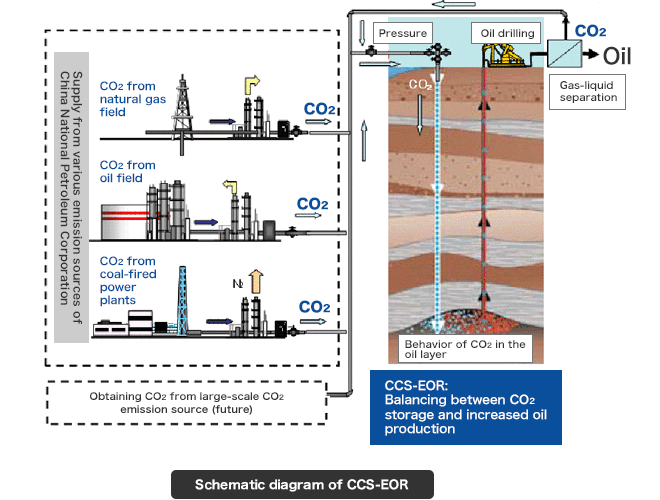Cooperation with International Organizations
CO2 Storage Research Group HOME
Cooperation with International Organizations
RITE contributes to activities under international organizations and an international framework promoting CCS deployment, including the Carbon Sequestration Leadership Forum (CSLF), the International Energy Agency Greenhouse Gas R&D Program (IEAGHG) and the London Convention.
CSLF and its Recent Activities
The Carbon Sequestration Leadership Forum (CSLF) is an international organization which promotes international cooperation in research and development, demonstration and commercialization of CO2 capture and geological storage and industrial use (CCUS: Carbon Capture, Use and Storage). In 2003, the United States took the lead role in establishing the organization and the US Department of Energy serves as secretariat. The forum has, at present, a membership of 24 countries, including developing countries and oil-producing countries in addition to developed countries such as Japan, and the European Commission. The activities are carried out by the policy group consisting of policy makers and the technical group consisting of representatives from enterprises and research institutes. The forum holds a ministerial meeting every two years. RITE has been a member of the technical group as the representative of Japan since 2009.
Since 2011, CSLF has incorporated the utilization of captured CO2, in particular utilization in Enhanced Oil Recovery (EOR), in addition to CO2 storage in its focuses. Behind the change is the fact that in order to break through the current situation where implementation of CCS demonstration projects around the world have been significantly delayed than expected, there is an idea of leading to a future acceleration of CCS deployment by promoting financially-feasible projects where captured CO2 is used and as a result compensates the costs of the capture technology as an initial step.
CSLF produces various reports, including update versions of the CSLF technology roadmap, through activities by task forces. The recent CSLF reports include conversion from CO2-EOR to CCS, CO2 utilization, review of best practices manuals and guidelines related to CCS, technical gaps, and storage monitoring at commercial projects.
IEAGHG and its Recent Activities
The IEA Greenhouse Gas R&D Programme (IEAGHG) was established based on an agreement concluded under the International Energy Agency (IEA) in 1991 for evaluation and promotion of diffusion of greenhouse gas reduction technologies, information dissemination of the evaluation outcomes and promotion of international cooperation. At present, CCS is the main target of its activities among reduction technologies for greenhouse gases. In addition to 19 countries including Japan, the European Commission, the Organization of the Petroleum Exporting Countries (OPEC) and 22 companies participate in the Programme. RITE became a member of its Executive Committee in 2009 as the representative organization of Japan and has contributed to the development of its activity planning and the review of the activities.
The main activities of IEAGHG include managing CCS expert networks and organizing workshops and conferences. With advancement of CCS demonstration projects, a network of experts on environmental impact was established in 2012. In addition to knowledge sharing within each individual network such as a network for modeling, monitoring and risk related to storage, there have recently been more efforts to knowledge sharing among networks. As a result, a joint workshop for risk and modeling and that for monitoring and environmental impact were respectively held in 2013. In the same year, there were two international conferences: one for post-combustion capture and the other oxyfuel combustion. The 12th Greenhouse Gas Control Technologies (GHGT-12) International Conference was held in Austin, Texas, USA, in October 2014.
Implementation of various technical studies is also one of the main pillars in its activities, and more than ten reports are published every year. There is tendency that more studies have been released on CCS in the context of natural gas, shale gas, renewable energy, hydrogen energy, electricity storage, biomass and bio-fuels.
London Convention and its Recent Activities
Offshore CO2 storage has been internationally allowed under the 1996 Protocol of the London Convention. The Protocol aims to prevent marine pollution caused by disposal of, for example, land-originate waste from ships, and an amendment to the Protocol enabling offshore CO2 storage became effective in 2007. Since then, discussions on CCS has been carried out from the viewpoints such as CO2 transboundary movement and in addition, ocean fertilization and marine geo-engineering have also been discussed. RITE is a participant as a member of the delegation of Japan in the meetings of contracting countries and those of the scientific group which is aimed at information-sharing based on scientific knowledge.
Joint research and other joint projects with overseas organizations
USALawrence Berkeley National Laboratory (LBNL)
RITE conducts joint research related to evaluation of long-term behavior of injected CO2 and impact of CO2 injection on geological formations with the Lawrence Berkeley National Laboratory (LBNL) in the USA. LBNL is a national research institute and participates in a CO2 injection project led by the Southeast Regional Carbon Sequestration Partnership (SECARB), sponsored by the US Department of Energy.
USABureau of Economic Geology (BEG) of the University of Texas
In cooperation with the Lawrence Berkeley National Laboratory and the Bureau of Economic Geology of the University of Texas, leader of the SECARB project at Cranfield, Texas, USA, RITE carries out a project on micro-seismic measurement there.
China National Petroleum Corporation (CNPC)
ChinaChina National Petroleum Corporation (CNPC)
RITE continues research collaboration with China Oil and CCS-EOR. We clarify concrete problems of CCS-EOR in China and are also examining the effectiveness of RITE monitoring technology and CO2 dissolution promotion technology.

Distributed Fiber Optics Sensing at the CaMI FRS Site
The CO2 storage research group participates in the CaMI FRS project, which is a member of the University of Calgary in Canada, and uses the distributed optical fiber measurement technology (DFOS) to verify the strain measurement method.

